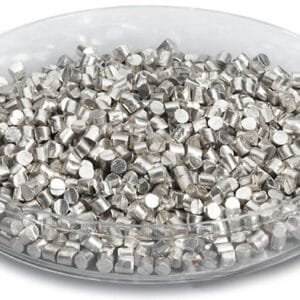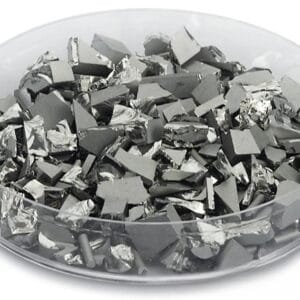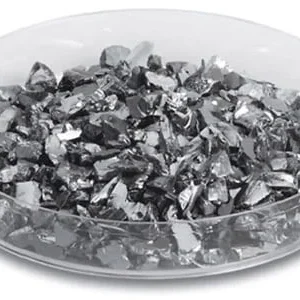Barium Titanate Evaporation Materials Overview
Thin-Film Mat Engineering (TFM) offers high-purity barium titanate evaporation materials with the chemical formula BaTiO3. These materials are vital for achieving high-quality films in deposition processes. TFM specializes in producing evaporation materials with purity levels up to 99.9995%, ensuring exceptional reliability through stringent quality assurance measures.
Related Products: Barium Evaporation Materials, Titanium Evaporation Materials
Barium Titanate Evaporation Materials Specifications
Crystal structure | Tetragonal |
Density | 6.02g/cm3 |
Melting Point | 1600 °C |
Molecule mass (g/mol) | 233.192 |
Dielectric constants: | ea = 3700, ec = 135 (unclamped) ea = 2400, ec = 60 (clamped) |
Index of Refraction | 515nm 633nm 800nm |
Reflectivity of SPPC ( at 0 deg. cut ) | 50-70% (max. 77%) for l = 515 nm 50-80% (max: 86.8%) for l = 633 nm |
Thermal Expansion | 9.4 x 10-6 /℃ |
Crystal orientation | <100>、<110>、<111> |
Standard Size | 5x5mm, 10x10mm, Or customized. |
Standard Thickness | 0.5mm, 1.0mm, |
Polishing | Single side polished or Double side polished |
Applications
Barium titanate evaporation materials are extensively used in:
- Deposition Processes: Essential for semiconductor deposition, chemical vapor deposition (CVD), and physical vapor deposition (PVD).
- Optics: Applied in wear protection, decorative coatings, and display technologies.
Packaging and Handling
Our barium titanate evaporation materials are meticulously tagged and labeled to ensure proper identification and maintain high standards of quality control. We take great care to prevent any damage during storage and transportation.
Contact Us
Thin-Film Mat Engineering (TFM) is a leading supplier of high-purity barium titanate evaporation materials. We offer various forms, including tablets, granules, rods, and wires, with custom shapes and quantities available upon request. We also provide evaporation sources, boats, filaments, crucibles, heaters, and e-beam crucible liners. For current pricing and inquiries about materials not listed, please contact us directly.


 MSDS File
MSDS File



Reviews
There are no reviews yet.